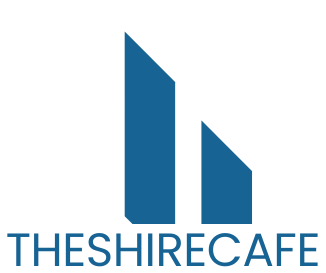Buying a home can feel like trying to find a unicorn in a haystack, especially when it comes to that pesky down payment. But fear not! FHA down payment assistance programs are here to save the day, making homeownership less of a fantasy and more of a reality. These programs offer a helping hand, allowing first-time buyers to leap over financial hurdles like a pro athlete.
Imagine sipping coffee in your new kitchen instead of fretting over how to scrape together a hefty down payment. With assistance options that cater to various financial situations, it’s easier than ever to unlock the door to your dream home. So let’s dive into the world of FHA down payment assistance programs and discover how they can turn your homeownership dreams into a delightful reality.
Table of Contents
ToggleOverview of FHA Down Payment Assistance Programs
FHA down payment assistance programs provide critical help to homebuyers, particularly first-time buyers. These programs address the challenge of saving for a down payment by offering financial aid that makes homeownership more accessible. Assistance options vary significantly; some programs cover a portion of the down payment, while others offer grants or low-interest loans for upfront costs.
Many states and local governments sponsor these programs. Eligibility requirements often depend on income levels, local housing market conditions, and whether the buyer is a first-time homeowner, defined nationally as someone who hasn’t owned a home in the past three years. Approval process timelines typically range from a few days to several weeks, depending on the specific program.
Homebuyers can benefit from various forms of aid. Some programs provide direct financial assistance, while others include tax credits or forgivable loans that reduce the burden of repayment. These resources empower buyers to focus on purchasing their desired property, rather than stressing over immediate costs.
FHA guidelines play a crucial role in these assistance programs. Borrowers must still meet specific qualifications, including creditworthiness and debt-to-income ratios. Understanding these guidelines helps potential homebuyers navigate the application process and increase their chances of receiving assistance.
FHA down payment assistance programs bridge the gap for many aspiring homeowners. With the right support, homeownership becomes an achievable goal, offering buyers the chance to invest in their future.
Benefits of FHA Down Payment Assistance Programs
FHA down payment assistance programs offer several significant advantages for aspiring homeowners. They enhance financial accessibility and broaden opportunities for homeownership.
Financial Accessibility
Access to FHA down payment assistance programs significantly reduces the upfront cost required for purchasing a home. Many programs cover a portion of the down payment, which makes homes more affordable. Lower financial barriers empower first-time buyers, particularly those with limited savings. Income-based eligibility criteria often ensure that assistance reaches individuals who genuinely need it. Federal guidelines establish the framework for many of these programs, increasing trust and accountability. Local governments often partner with the FHA to provide tailored options that address specific community needs. Overall, financial accessibility provided by these programs facilitates the homeownership journey for many.
Increased Homeownership Opportunities
FHA down payment assistance programs create increased opportunities for homeownership among diverse populations. Many individuals find it challenging to save enough for a traditional down payment, and this assistance can help bridge that gap. Eligible buyers gain access to various housing options that might otherwise remain out of reach. With less financial strain, families can invest in homes that meet their needs without overwhelming future costs. Many states and municipalities actively promote these programs, integrating them into local housing strategies. Homeownership rates among first-time buyers often increase due to the support they receive, contributing to stronger communities. Programs that remove financial barriers ultimately foster greater economic stability for those on the path to owning a home.
Types of FHA Down Payment Assistance Programs
FHA down payment assistance programs come in several forms, each designed to help homebuyers with varying funding options. Understanding these types simplifies the process of obtaining financial aid.
Grants and Forgivable Loans
Grants provide financial aid that does not require repayment if the buyer meets specific conditions. State and local governments frequently offer these grants. Forgivable loans function similarly but require repayment only if the buyer does not occupy the home as their primary residence for a set period. These funds cover a portion or the entirety of the down payment, making homeownership more accessible. Many programs include income limits ensuring assistance reaches those with genuine needs. Examples include programs in California and Texas, where eligible participants receive substantial aid.
Low-Interest Loans
Low-interest loans assist buyers by offering funds at rates lower than typical market loans. These loans often come from state or local housing agencies, specifically tailored for first-time buyers. Applicants may find loans covering down payment and closing costs, with payments deferred until the home sells or is refinanced. Approval typically depends on income and credit criteria, ensuring assistance targets those who need it most. Several states maintain these programs, significantly increasing affordability for eligible buyers and expanding homeownership opportunities.
Eligibility Requirements
FHA down payment assistance programs have specific eligibility requirements. These ensure that help reaches those who need it most.
Income Limits
Income limits generally vary by location and household size. Most programs set maximum income thresholds based on the area’s median income, which helps target assistance to lower-income buyers. For instance, some programs may allow households earning up to 80 percent of the area’s median income to qualify. Local housing authorities typically publish updated income limits, making it essential for potential buyers to check current figures. Higher income limits might apply in areas with elevated housing costs, ensuring broader access to assistance.
Credit Score Criteria
Credit score criteria often differ among programs, but general expectations exist. Many FHA down payment assistance programs require a minimum credit score of 580 for eligible buyers, although some may allow lower scores with additional conditions. Higher credit scores can improve the chances of qualifying for better assistance options. It’s advisable for buyers to review their credit reports and address any inaccuracies before applying. Understanding credit implications supports better decision-making and can lead to favorable loan terms.
FHA down payment assistance programs serve as a vital resource for aspiring homeowners. By lowering the financial barriers associated with purchasing a home, these programs create pathways to homeownership for many first-time buyers. With options like grants and forgivable loans, individuals can find the support they need to secure their dream home.
The focus on income-based eligibility ensures that assistance reaches those who truly require it. As these programs continue to evolve, they play a crucial role in fostering diverse communities and enhancing economic stability. Ultimately, FHA down payment assistance programs not only make homeownership possible but also empower individuals to invest in their futures.



